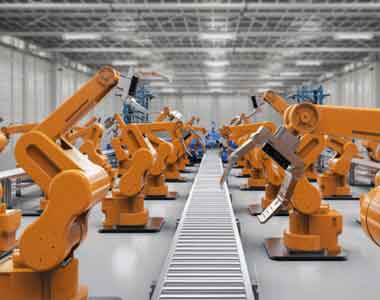| |
|
| |
|
 |
Supply
Chain by the Numbers |
| |
|
| |
- Feb. 19, 2020 -
|
| |
|
| |
|
| |
|
| |
Amazon Delivery Service Partner Ranks Culled; Pricing Warehouse Robots Lower than Human Costs; Big Drop in Trucking Volumes, Rates; US Industrial Robot Shipments Fell in 2019 |
| |
|
| |
| |
| |
| |
1300 |
|
That’s about how many drivers employed as part of the Amazon Delivery Service Partners (DSP) program are losing their jobs. That’s the program in which local entrepreneurs in effect receive franchises to make parcel deliveries in their areas, with subsidized leases of Amazon-branded vans and other support. But some of those business owners appear to be left high and dry now, as Amazon announced it was no longer going to send parcels to some partners for what it says are failures to meet performance standards. One of those impacted is Bear Down Logistics, an Illinois company that rapidly expanded over the past two years, and is now shuttering operations in five states and letting go of about 400 drivers after being cut by Amazon. Delivery Force, an Amazon delivery partner in Washington state, is cutting 272 drivers in Seattle and other cities. "The action underscores the challenges of outsourcing deliveries to new, untested companies instead of traditional partners such as United Parcel Service Inc. and FedEx Corp.," Bloomberg.com notes. "It also serves as a warning to Amazon delivery partners that the company is an exacting client willing to cut them off."
|
|
|
| |
| |
|
|
|
That was the January decline in the Cass Freight Index, which tracks US shipping volumes, the largest year-over-year decline since the deep recession year of 2009. That’s not good news for carriers – or the overall economy, as freight is often a very good predictor of both good and bad economic times ahead. And that sharp drop in the freight index came largely before the impact of the coronavirus crisis in China and beyond, which has already deeply impact the flow of ocean containers into the US. Naturally enough, weak volumes led to a sharp drop in the Cass Linehaul index, which measures US truckload rates before fuel surcharges and other accessorial costs. The index was down 6.3% year over year, and 2.9% versus December. |
| |
| |
|
| |
| |
23,750 |
 |
That was the rather precise estimate for the number of industrial robot shipments in 2019, according to a new report from Association for Advancing Automation, an industry group based in Ann Arbor, Michigan. According to a summary of the report by Reuters, that 23,000-plus robots total was surprisingly down 16% from 2018. Robot shipments also fell in Mexico in 2019, declining 25% to 3,263, while shipments in Canada roughly held steady at just over 3,000 units. Why the decline in the US? A relatively weak manufacturing sector, with many companies impacted by the tariff wars, received the top blame, though no one really knows for sure. There may also have just been some timing issues, as the auto sector, by far the largest for robot deployment, may have paused adoption last year amid plans to retool in 2020 and 2021. For example, General Motors has announced it is investing $2.2 billion to build electric trucks and autonomous electric vehicles at its Detroit-area plant in Hamtramck, Michigan – and no doubt there will be lots of robots. |
| |
| |
| |
| |
| |
|
|
|
| |
 |
 |
| |
 |
![]() |
 |
|
| |
 |
Feedback |
|
|
|
![]()
|
No Feedback on this article yet.
|
|
![]() |
|
|
|
![]() |
 |
![]() |
 |
|
| |